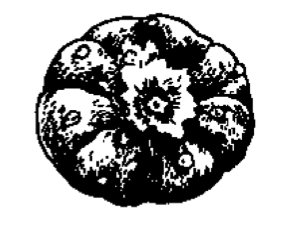Injurious Energy from the Ovaries
On a Sunday night in late November, an exuberant and sweaty crowd left the White Street Center for Movement and Bodywork’s Tribeca studio after a two-hour kung fu workout, while a smaller, more subdued group of four students took its place. By 7:35 p.m., the evening quartet had begun a sequence of movements resembling the wayward love-child of tai chi and charades. The sequence, or “magical passes,” included gestures ranging from the balletic tendues and ronds de jambe a terre, to the less virtuosic and more maddening effort of pulling one’s own hand with one’s other hand to extract the “magic parts” contained in the shallow webs between the fingers. Movements ranged from athletic to gestural/absurd. I was one of the four (and most likely only) people in New York City practicing the allegedly sacred art of Tensegrity on this particular Sunday night in November. To prepare, I changed into clothes befitting a modern dance class—track pants and a tank top. When the other three participants arrived wearing loose-fitting clothes, I quickly gleaned that Tensegrity is not something for which you merely get dressed and undressed. For these people, Tensegrity is a way of thinking and moving, and possibly a way of life.
To begin, we formed a small circle. I followed the lead of the two experienced practitioners who frequently disagreed over the sequence of movements and various hand positions.1 We began with a parallel stance, a slight knee bend, and a thrust of the arms forward in space (on the inhalation) before pulling the hands back to rest below the armpits (on the exhalation). The second movement consisted of the same arm thrust, but we capped it by tracing two circles in the air with our wrists stiffened, a choreographic decision that I mistakenly interpreted as an ode to the ovaries. (As it turns out, Tensegrity addresses the ovaries in another movement called “Squeezing Out Injurious Energy from the Ovaries,” as part of the “Series For the Womb.”) Special attention was afforded to our hands, which, as instructed, took the handle of an imaginary “whip.” Things grew slightly more athletic as we reconfigured our hands into hooks, as if preparing to “walk like an Egyptian.” Slowly, we linked the movements to form a sequence that we practiced in semiretarded unison. I was tentative with my “whip,” but managed to mimic the bodily shapes. We finished the class with a tribal-like fire dance, some stomping, some coming together and moving apart.
Though the practice group I attended was small, Tensegrity practitioners consider themselves part of something larger, on both tangible and intangible levels. On a tangible level,...
You have reached your article limit
Sign up for a digital subscription and continue reading all new issues, plus our entire archives, for just $1.50/month.
Already a subscriber? Sign in





